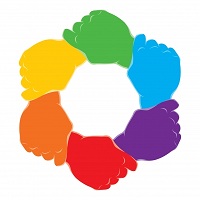Fair Trade is a relatively new economic movement in the consumer space and a buzzword whose true definition is somewhat obscure.
We’ve broken down Fair Trade into five simple aspects that can help you better understand this movement and how it contributes to the global economy, and potentially, your life!

Through community collectives and artisan groups, those involved in the producing of goods for Fair Trade experience ownership. This ownership includes share in the profits from goods produced and a say in business decisions
Defining Fair Trade
Quite simply, it’s a way for the consumer cycle to respect everyone and everything involved in the production and end-user cycle. Workers that have a vested interest in the business enjoy humane wages and living conditions, products are harvested and manufactured using eco-friendly practices, distributors pay honest prices for products and the funds from sales are oftentimes reinvested in the local community to improve living and economic conditions. Good beginnings beget good ends.
Offering a Fair Price with Fair Labor Conditions
Gone are the days of sweatshop conditions and rock-bottom prices that pay workers a pittance. Fair Trade practices involve suppliers who have agreed to pay prices for products that are manufactures under strict labor conditions. Prices paid are designed to allow workers to earn a living wage. Living wages are considered to be those that allow workers access to local food, shelter, clothing and medical care. Distributors are stringently audited to ensure that the price they pay for items labeled as Fair Trade support these goals.
Building Communities
Monies earned by a community or artisan collective involved in Fair Trade practices are frequently reinvested in their own backyard. Schools, medical facilities and vocational training programs are among the most popular forms of reinvestment.
Empowering Communities Economically
The nations that support Fair Trade practices are impoverished with citizens living on the lowest rung of the economic ladder. Through community collectives and artisan groups, those involved in the producing of goods for Fair Trade experience ownership. This ownership includes share in the profits from goods produced and a say in business decisions.
Promoting the Use of Sustainable Resources
Fair Trade manufacturing ensures that the materials artisans and workers use will be around in the future. From coffee to craft goods, workers commit to using renewable resources from their local area, harvesting supplies and products in a way that doesn’t harm the environment and distribution methods that involve recycled packaging and shipment by sea when possible.
More and more people across the world are beginning to appreciate the quality and craftsmanship of Fair Trade products.
These products are usually handmade, a relief from the now more typical lower quality mass-produced products. In the US people are used to the saying, “They don’t make things like they used to.” But with Fair Trade, you can often find quality products that are rare and promote a better way of life.
Nathan Joynt works with Gaiam.com to support fair trade products and guide people towards healthy living.
Image: Rawich / FreeDigitalPhotos.net
